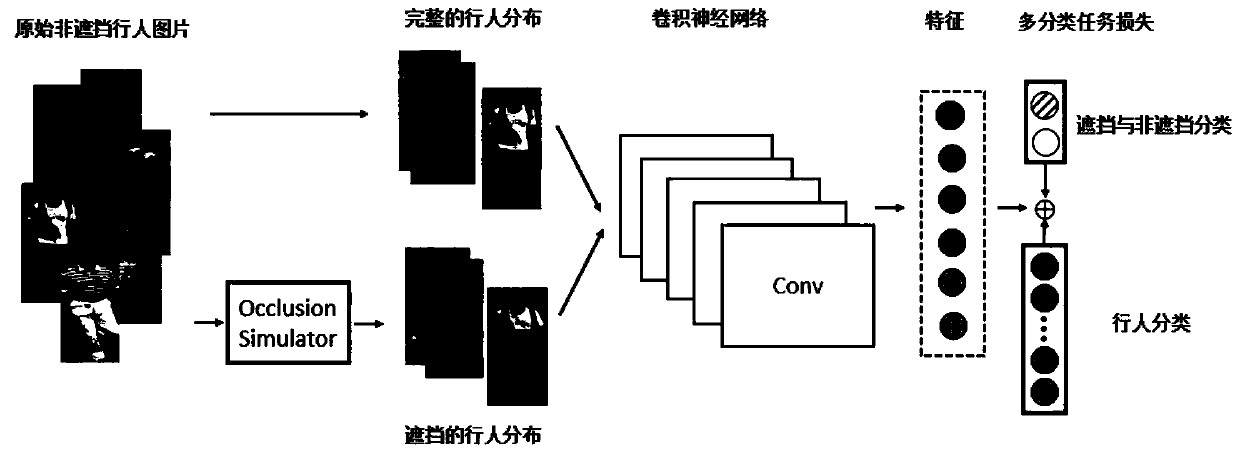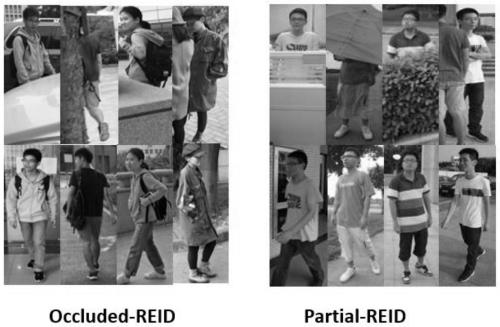A re-identification method for occluded pedestrians based on centralized learning and deep network learning
A pedestrian re-identification and deep network technology, applied in the field of occluded pedestrian re-identification based on centralized learning and deep network learning, can solve the problems of image feature interference, few pedestrian image building models, poor pedestrian re-identification effect, etc., to achieve very robust effect
- Summary
- Abstract
- Description
- Claims
- Application Information
AI Technical Summary
Problems solved by technology
Method used
Image
Examples
Embodiment
[0033] Such as figure 1 As shown, in this embodiment, a re-identification method for occluded pedestrians based on centralized learning and deep network learning, specifically includes the following steps:
[0034] S1. First, the original pedestrian image (unoccluded pedestrian image) is used to generate a corresponding occluded pedestrian image through the occlusion simulator.
[0035] The original pedestrian image mentioned here comes from the existing pedestrian re-identification database, which is a pedestrian image without any occlusion. Let X represent a collection of unoccluded pedestrian images, the collection contains M pedestrians and a total of N images, and X is equal to in Indicates the j-th image of the i-th pedestrian, y i Represents the class label of pedestrians. The occlusion simulator implements an image-to-image mapping F:X→Z, where Z represents a collection of occluded pedestrian images, using said, among them By Corresponding to generated occl...
PUM
 Login to View More
Login to View More Abstract
Description
Claims
Application Information
 Login to View More
Login to View More - R&D
- Intellectual Property
- Life Sciences
- Materials
- Tech Scout
- Unparalleled Data Quality
- Higher Quality Content
- 60% Fewer Hallucinations
Browse by: Latest US Patents, China's latest patents, Technical Efficacy Thesaurus, Application Domain, Technology Topic, Popular Technical Reports.
© 2025 PatSnap. All rights reserved.Legal|Privacy policy|Modern Slavery Act Transparency Statement|Sitemap|About US| Contact US: help@patsnap.com



